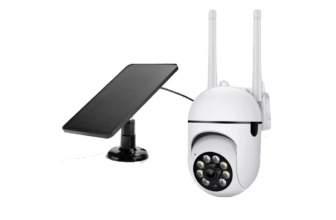Keyless Entry Systems
In today’s world, the availability of essential products and services at the client’s doorstep or business location is crucial. The rise in popularity of smart lock and biometric entry systems has rendered traditional key-turn entry systems nearly obsolete. These modern methods offer efficient and effective access without the need for physical keys. This comprehensive guide delves into keyless entry systems, shedding light on their definition, purpose, and potential vulnerabilities.
Door Locks with No Handles
A keyless entry system represents an advanced security solution for managing access to a specific property without the necessity of a physical key. These systems can employ various methods such as fingerprint scanning, facial recognition, iris scanning, keypads, key fobs, or smartphone applications to authenticate users and grant access upon verification.
The primary objective behind keyless entry system design is to enhance security while simplifying daily life. By eliminating the risks associated with lost or duplicated keys, these systems provide a robust security measure against unauthorized access. Additionally, keyless entry systems offer detailed access reports, enabling property owners or managers to monitor entry events effectively.
Biometric Systems:
Biometric keyless systems utilize physical identification attributes like fingerprints, facial features, or iris patterns to verify and permit entry. These systems offer a high level of security where it is challenging to differentiate between the original and a copy, making them ideal for enhanced security measures.
Keypad Systems:
A typical keypad system requires users to input specific numbers or digits to unlock access. This cost-effective solution is suitable for both residential and commercial applications.
Key Fob Systems:
Key fob systems utilize small, portable devices that interact with an acceptor unit at the entry point.
Mobile App Systems:
While keyless entry systems were traditionally limited to physical devices, advancements now allow integration with mobile applications. Users can conveniently control door or gate access through their smartphones.
Keyless Entry Systems: Technical Aspects
Identification:
The system initiates by verifying the user’s identity through biometric scans, authorized codes, key fobs, or smartphone applications.
Verification:
Following identification, the system cross-references the user’s credentials with an approved access list.
Access Granted:
Upon successful verification, the system triggers the unlocking mechanism to grant access.
Enhanced Security:
Keyless entry systems mitigate the risk of key loss, duplication, or theft, thereby reducing the chances of unauthorized access.
Convenience:
Users are relieved from the hassle of searching for keys or forgetting their location.
Access Control:
Property owners or managers can swiftly grant or revoke access rights, ensuring only authorized individuals enter the premises.
Monitoring and Logging:
Comprehensive logs offer detailed access records and event tracking, enhancing security and accountability.
Integration:
Most keyless entry systems can be integrated with other security features like surveillance cameras or alarms to create a comprehensive security setup.
Keyless Entry: The Solution or the Problem
Keyless entry systems have gained popularity in various applications, offering both advantages and disadvantages:
Pros:
- Enhanced security and peace of mind.
- User-friendly operation and reduced inconveniences.
- Flexible access control based on user roles.
- Cost savings on key replacements.
- Detailed logs for monitoring and auditing purposes.
Cons:
- Initial installation costs can be high.
- Vulnerability to hacking or system malfunctions.
- Dependence on power sources.
- User errors like forgetting codes.
- Compatibility issues with existing security infrastructure.
Conclusions
With technological advancements, keyless entry systems have become a standard offering in the residential and commercial sectors. These systems strike a balance between security and accessibility, allowing authorized individuals to enter without compromising safety.
Property owners and managers can choose from a range of keyless entry solutions tailored to their specific needs. Whether opting for biometric systems for high-security facilities, keypad systems for cost-effective access control, or mobile-integrated systems for convenience, the options are diverse.
When considering keyless entry systems, it is essential to weigh the pros and cons, aligning the choice with the property’s requirements and seeking expert advice. By implementing keyless entry systems, property stakeholders can rest assured that their premises are secure, without the hassle of traditional keys.




